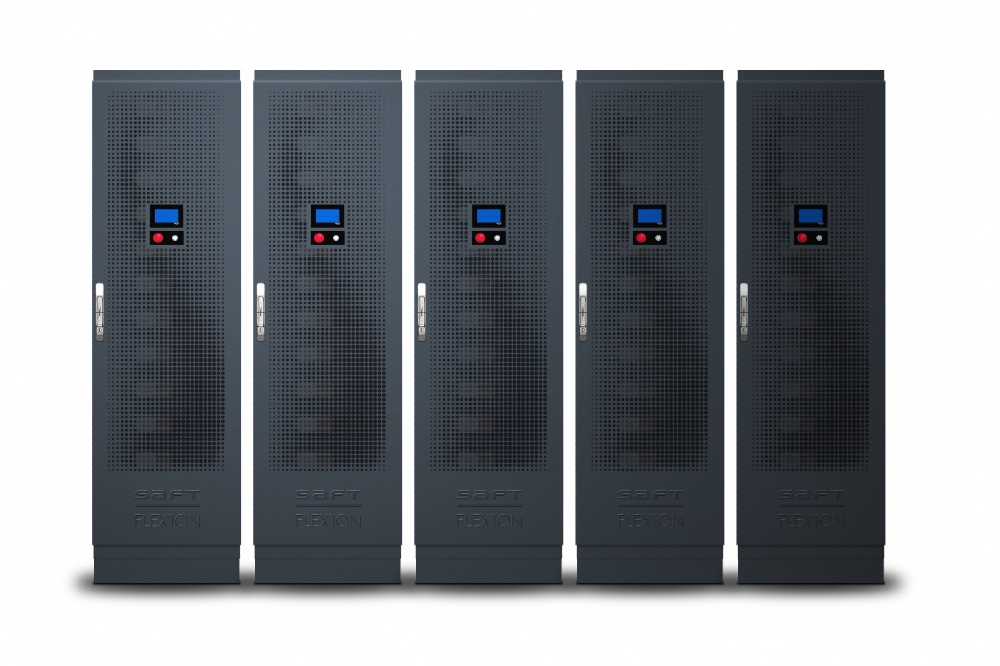François Danet, Saft Batteries’ global business development manager, data centres, discusses how lithium-ion batteries could change the UPS market, and why recent developments in the technology make them better than VRLA.
Over the next decade, data centres architectures will need to adjust to support 5G, streaming, autonomous vehicles and the connection of ever more devices to the Internet of Things (IoT). This will require more and more efficient energy. Meanwhile, the industry is joining the society-wide push for reduced carbon dioxide emissions. Fortunately, technological advances promise to enable businesses to pursue these goals simultaneously.
Even a short unplanned outage of data services can be incredibly costly in terms of productivity, reputation, and lost business – and because power outages are the most common cause of data loss, operators have for many years relied on their uninterruptible power supply (UPS) systems for backup.
The role of an uninterruptible power supply (UPS) is to guarantee consistent, high-quality power for servers, regardless of outages of mains power or momentary fluctuations in power quality. Traditionally, valve-regulated lead-acid (VRLA) batteries have been at the heart of the data centre UPS. However, lithium-ion (Li-ion) is now a mature alternative which brings major advantages in terms of Total Cost of Ownership (TCO) and ability to address energy efficiency as CO2 emission challenges.
VRLA versus Li-ion
VRLA batteries have been the choice for UPS applications because of their affordability and availability. However, the ongoing development of Li-ion batteries, spurred on by consumer technology applications at the beginning, has resulted in greater availability of Li-ion batteries solutions for industrial applications over many years.
Li-ion batteries are smaller, lighter and charge faster than their VRLA counterparts. As a result, Li-ion battery systems pack more performance into around one third of the space and one sixth of the weight. This can mean huge savings in building costs for an operator, especially in cities where office space and infrastructure comes at a premium.
In addition, Li-ion batteries have a long calendar life and do not require the same level of maintenance as VRLA batteries, such as capacity testing. This drastically reduces risks and offers a sustainable solution.
Some Li-ion batteries offer the ability to operate at high temperatures – up to 40°C – at full performance while retaining a significant lifespan of over 12 years. This offers an opportunity for HVAC energy savings – an important consideration for data centre operators that are looking to enhance their energy efficiency.
A further benefit is that while a VRLA battery takes up to 12 hours to recharge, a Li-ion battery can be fully charged – after full discharge – in up to 75min. This improves system availability.
Li-ion batteries integrate accurate and smart monitoring which implies digital management of critical equipment – even remotely for some operators – and predictive maintenance to improve system availability. Last but not least, due to the level of data collected, this offers the ability to improve power backup capacity for potential extension and/or future expansion.
Given all these factors, it’s no wonder that Li-ion batteries are a real game changer and will become increasingly popular for UPS applications to address upcoming challenges.
Is Li-ion the future of UPS batteries?
This is just the beginning of a long journey, since the first generation of solid-state batteries are also under development. It’s likely that these will provide 250 or even 300 kW from the same footprint within the next five years. For the time being, the Li-ion battery remains the best choice to address mission critical applications where power density matters, energy efficiency as TCO is valued, when accurate monitoring is considered and when the operator cannot compromise on safety


